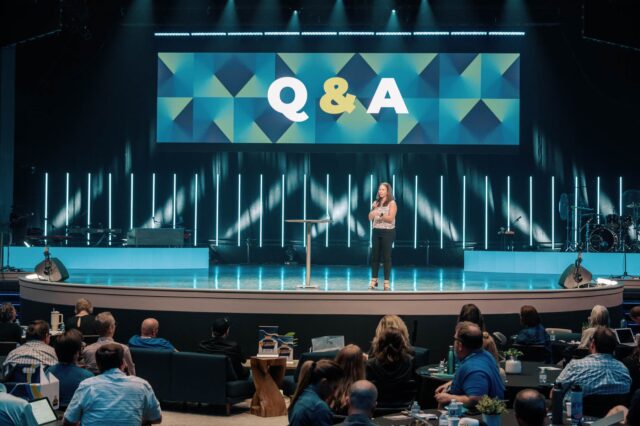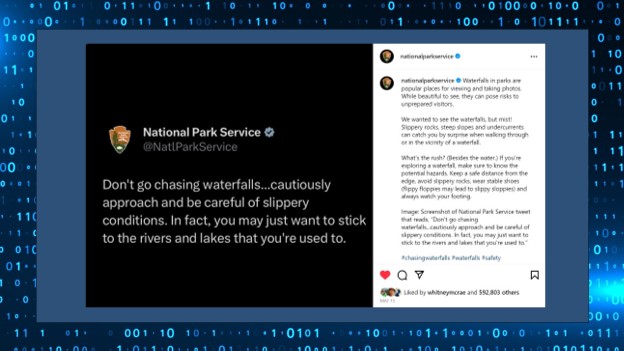
Two weeks ago, I had the pleasure of attending Christian Music Broadcasters’ Momentum Summit in Charlotte. At the Digital Summit, I presented “Digital Strategy Do’s and Don’ts”, highlighting some of the lessons we’ve learned alongside our clients over the years as they have moved into the digital space. I was thrilled that so many attendees stuck around after the session to ask questions and share some of their experiences and ideas.

Here are some of the best practices we discussed in the session:
The most important rule of digital strategy: Have a digital strategy. We need to meet consumers where they are, and we are constantly reminded that they are spending less and less time with AM/FM and more time with digital offerings. Now is not the time to practice digital avoidance.
Stay on top of any publicly available data about consumption trends. This may seem obvious, but it’s imperative that you know what media your listeners are spending time with when they aren’t with you. It’s also important to know when new trends emerge so you can adjust your digital strategy as needed.
Be an Outside Thinker when it comes to your digital offerings and digital strategy. If you have spent any time around someone from Coleman Insights, you have probably heard us talk about Inside vs. Outside Thinking. Inside Thinkers have a hard time thinking about their brand, images, and content from the perspective of consumers or potential consumers—they let themselves get too mired in the details. Outside Thinkers, on the other hand, make a point of viewing their content and brand through the lens of the consumer.
While Inside Thinkers may believe that listeners care deeply about their entertainment options, pay close attention to them, and can be easily manipulated, Outside Thinkers don’t subscribe to these beliefs. They recognize that consumers have a lot going on in their lives and they don’t care deeply about their radio stations and other entertainment options. Outside Thinkers also consider that they are not just competing with other radio stations and audio offerings. Use Outside Thinking when developing and implementing your digital strategy.
Don’t fall into the trap of believing that your radio listeners know about your digital offerings. You may feel like all you do is talk about your app, or which apps listeners can use to listen to your content offerings, or where they can find them on the website. You may even feel that listeners must be sick of hearing about it. But the truth is, they probably don’t know as much as you think they do about your digital offerings. We see this over and over again in our research. It takes a long time for messages to sink in and consumers hear a lot of them on any given day. Practice consistent messaging and put it on repeat—even if you are sick of it.
Eliminate consumer friction. One of the things I do when we first start working with a new client or station is to interact with the brand in all the ways a consumer might. I listen to their FM or AM frequency if I’m in the market, I stream from the website, ask Alexa to play it, and listen via apps. On several occasions, I have hit some friction point that prevents me from listening. Maybe the app interface is too clunky, or I can’t find what I am looking for. Maybe Alexa can’t figure out what it is I want to hear. Or maybe I hear six minutes (six minutes!) of pre-roll and commercials before I hear one song when I start streaming from the station’s website. In today’s highly competitive digital landscape, we can’t afford to let listeners have a poor experience. Not when competitors have slick apps with all the bells and whistles.
Promote your digital offerings where your consumers are. I try to avoid TikTok and Reels and YouTube shorts because my time is valuable, but I get sucked in more than I’d like to admit. And I am exposed to brands because of these platforms. Use them! It just takes a little time and creativity.
Promote your digital offerings the way real people use them, using the language they do. My colleague Jay Nachlis just presented a study called The New Rules of Podcasting on YouTube at Podcast Movement and that study found that 75% of podcast consumers define a podcast as audio or video vs. just 22% who define it as audio-only. He referred to it in last week’s Tuesdays With Coleman blog which you can find here.
When you talk about your content, make sure your language matches the consumer’s. And, based on the findings of the study, if your podcasts aren’t on YouTube with some video component… they probably should be.
Don’t be afraid to take an unexpected approach. In my session, I talked about my fascination with the National Park Service’s social channels. Matthew Turner, who manages the National Park Service’s social channels, has gained the 107-year-old government agency a million followers a year for the past four years by pushing out informative and often humorous messages that are each liked and shared by thousands of followers. The NPS has been around longer than commercial radio, but park visitation is up!

Your digital offerings and strategy must be consistent with your brand. As you navigate the digital space, make sure that all the content you create and share is consistent with the big idea of your brand, whatever that is. Consumers should know that they are listening to your content regardless of how they consume it.
Use each of your platforms to promote the others. How do I learn about podcasts? I hear advertisements on other podcasts… and the cycle continues. Not only does this messaging encourage additional usage, but it also builds your brand image as more than just _____. And remember to be consistent and repetitive with the messaging.
Embrace the benefits of an unformed brand. Do you suffer from a weak brand? Great! That means you can grow your brand images in the digital space more easily than stronger brands that are firmly rooted in FM in the minds of the audience. Embrace your weak brand and form a digital strategy that capitalizes on that.

Great article!